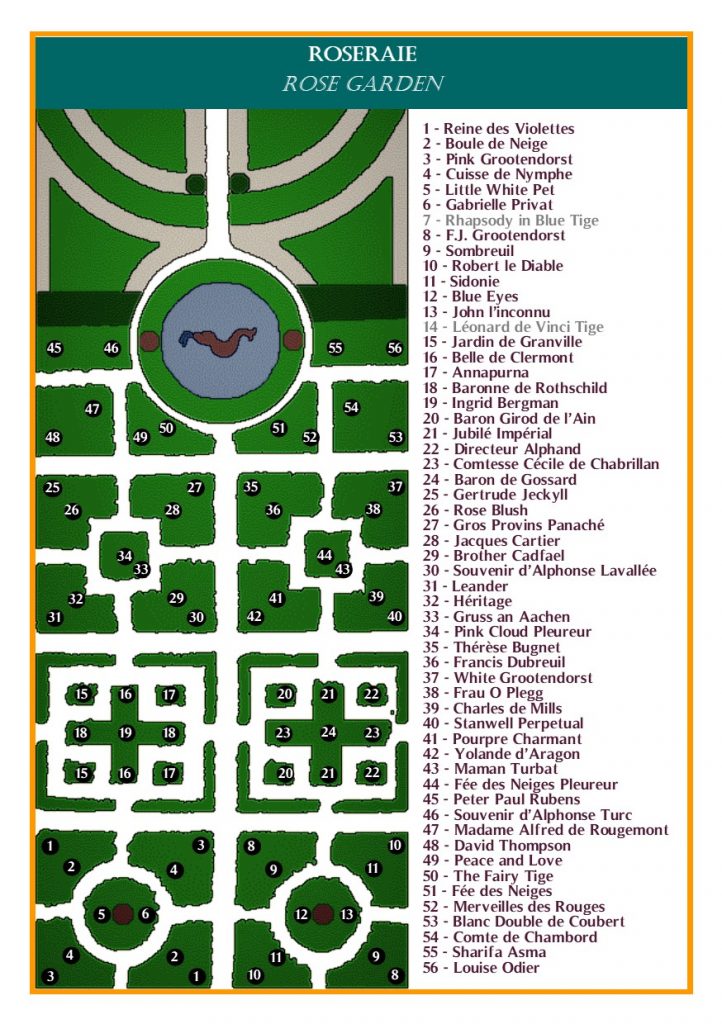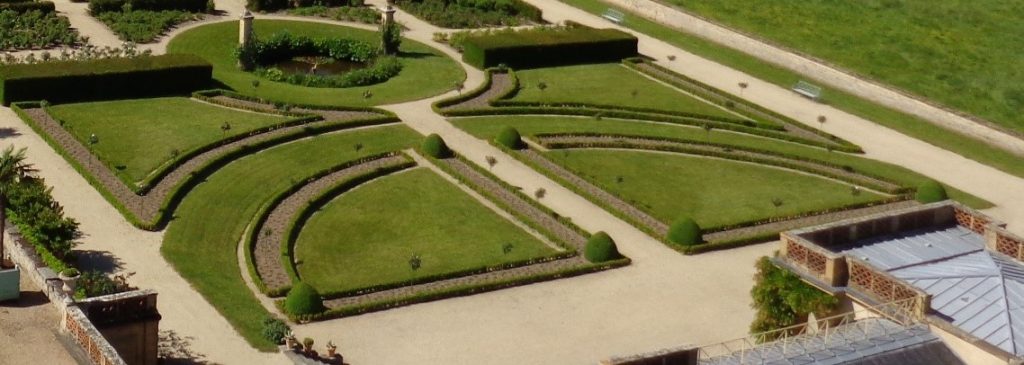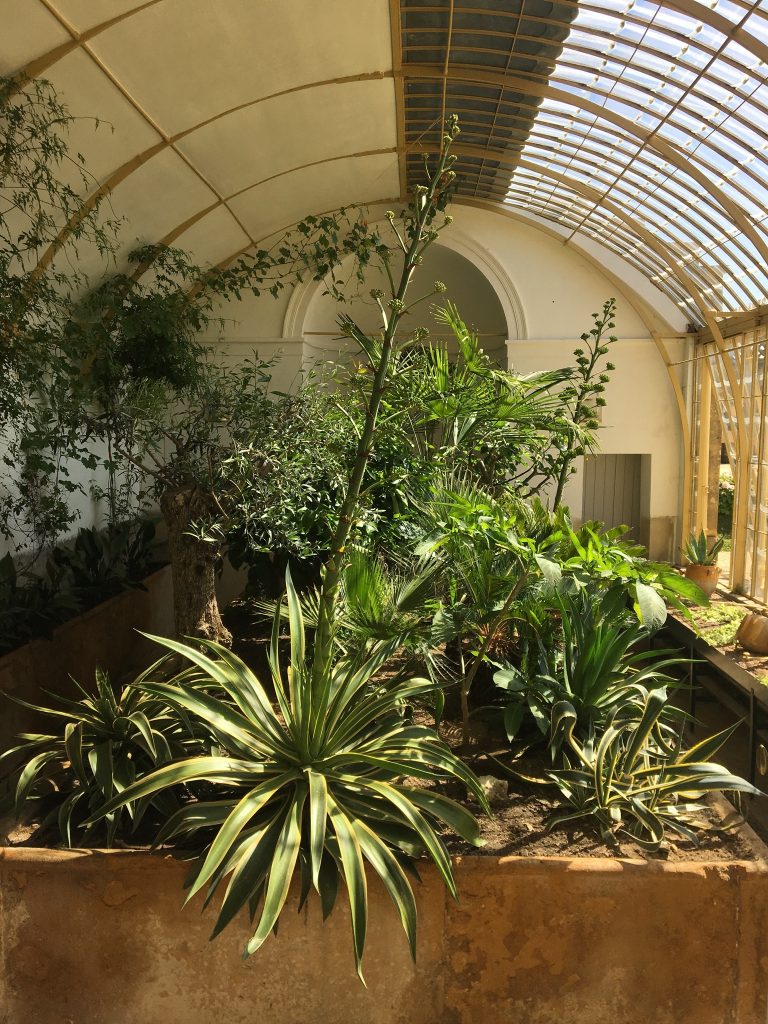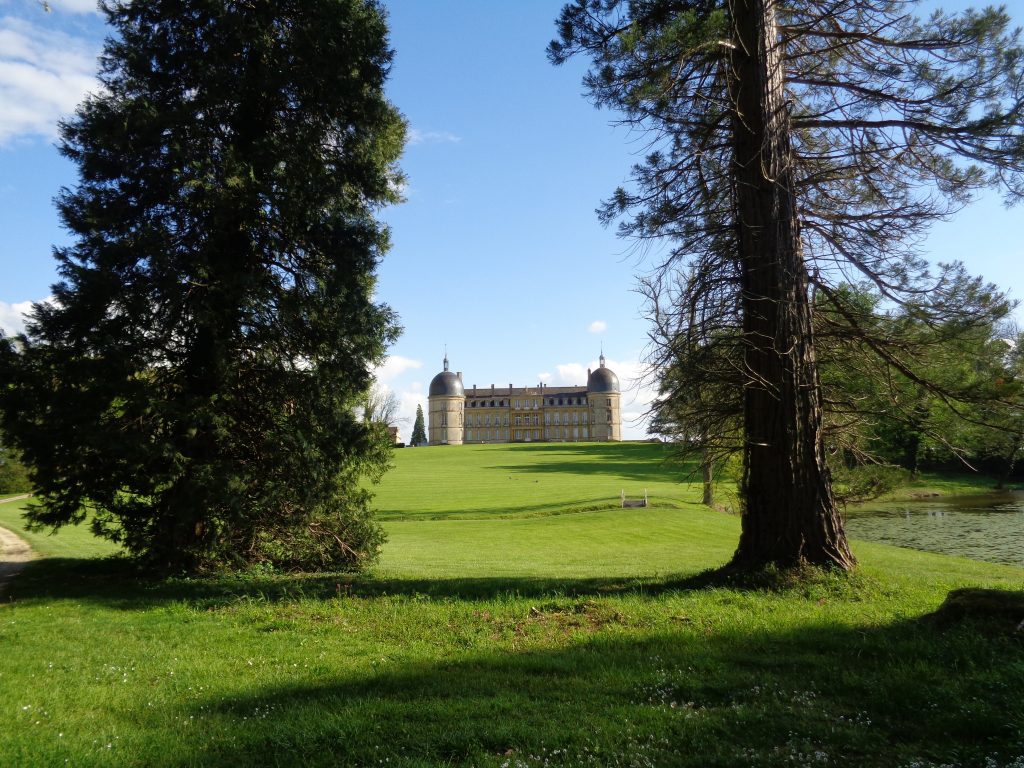Spreading over 35 acres, the estate of Digoine is composed of a multitude of spaces with specifics landscaping. These ones offer to the visitor different atmospheres propitious to contemplate, enjoy a stroll or meditate.
-
The southern courtyard
A double row of plane trees, northern red oaks and common lime trees frame the south aisle which formerly constituted the main entrance of the Castle of Digoine. During the Middle-Ages, a drawbridge spanning the dry ditches used to replace the current large portal. After entering, yews topiaries delimit the path leading to the ‘cour d’honneur’ (court of honour). These elements were replanted by the current owner. Classified as Historic Monument, the lines draw to the outline were designed by the famous landscape architect Achille Duchêne.
-
The 1920’s parterre
Restored identically to the original one, the parterre adorns the front part of the greenhouse and is also the work of Achille Duchêne. It was drawn upon the request of the Earl de Croix, owner of Digoine all along the 20th century. The rod-shaped roses that we can admire correspond to the species named ‘Jardin de Granville’ (from Normandy).
All boxes (buxus) found in the gardens are treated with Bacillus thuringiensis, a soil-dwelling bacterium, commonly used as a biological pesticide
-
The greenhouse
Of iron and glasses, the greenhouse was built in 1830 upon the request of the Chabrillan family, in order to cultivate botanical species which would not otherwise get acclimated to the region. The distinctive feature of this building is its boiler below ground, a very modern installation for its time which was used until the 20th century. The greenhouse, restored in 2008, is composed of the plant collection of the current owner. Among them, we can find grapefruit trees, lemon trees and gigantic agave species.
-
The rose garden
Built in 2017, the rose garden constitutes one of the major creations of these last few years. Composed of more than 2000 old rosebushes, divided into around 60 species, it is highlighted by more than 600 yews around that form a square shape. The dynamic of the forms and colours of the flowers, in addition to the pleasant scent of the flowers, confer to the rose garden a sweet and soothing atmosphere.
-
Herbaceous border
Facing the rose garden, along the wall that delimits the south courtyard, was designed a coloured flower-bed called in French ‘mixed border’. It includes, among others, magnolias and peonies, in which plants are free to mix with others in a perfect chromatic harmony. Often used in regular English gardens, this concept has been popularised at the end of the 19th century by the specialist of gardens: Gertrude Jekyll.
-
The vegetable garden
It was created at the location of a former monk cemetery of the convent of the Picpus fathers (existing from 1609 to 1776), the vegetable garden has been entirely redeveloped. Vegetables that grow in here are cultivated for consumption.
-
The New French Garden
As it was completed only in 2018, it is the last external creation of Digoine and is now replacing the former sylvan theatre. Inspired by designs from Achille Duchêne, this landscaping was selected among a dozen suggestions. We can find species such as roses, peonies, dahlias, but also, at the center of the triangular parcels, cultivated garlic and cosmos.
-
English style garden
Qualified as a ‘very beautiful park framing a magnificent pond’ by the Goncourt Brothers, the English style garden dates back from the years 1750-1770. Designed by the architect Edmé Verniquet, this ‘irregular’ garden is very popular at the end of the 18th century, which is in opposition to the ‘dictatorship of garden lines’ from French style gardens, as the French philosopher Rousseau once said.
This park invites us to take a stroll and take time to contemplate, while magnifying the natural beauty of natural landscapes by a very subtle intervention of men. Here, serpentine alleys take place among large lawns which frame the pond and the wooden part. A picturesque detail is present among all, it is a boat house, enhancing this natural framework.












